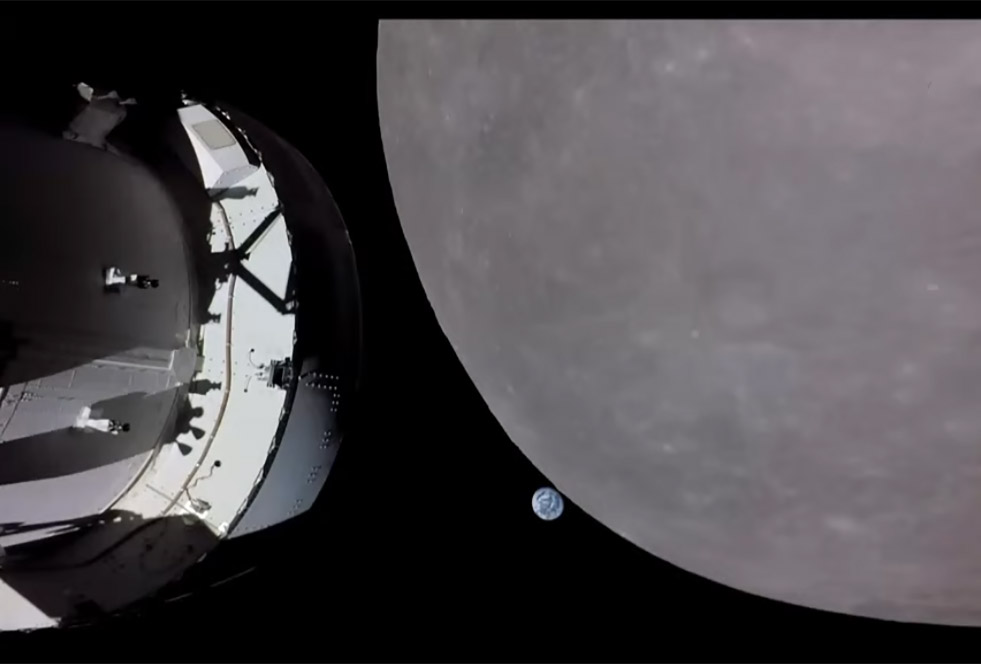
For SpaceUpClose.com & RocketSTEM
KENNEDY SPACE CENTER, FL – NASA’s new era of Artemis exploration continues gathering momentum as the unpiloted Orion crew capsule successfully completed its outbound powered flyby (OPF) engine burn Monday morning, Nov. 21 and made its closest flyby of the Moon – keeping the human space vehicle and Artemis 1 mission precisely on track for targeting its distant retrograde orbit (DRO) trajectory while simultaneously snapping luscious selfie look backs to the Earth and Moon, just five days after the spectacular thunderous blastoff from the Kennedy Space Center (KSC) in Florida.
Orion successfully performed the outbound powered flyby burn at 7:44 a.m. EST, Monday, Nov. 21, while traveling on the far side of the Moon with a firing of the orbital maneuvering system engine (OMS) engine attached to the base of the ESA Orion service module for 2 minutes and 30 seconds while travelling at 5,023 mph.
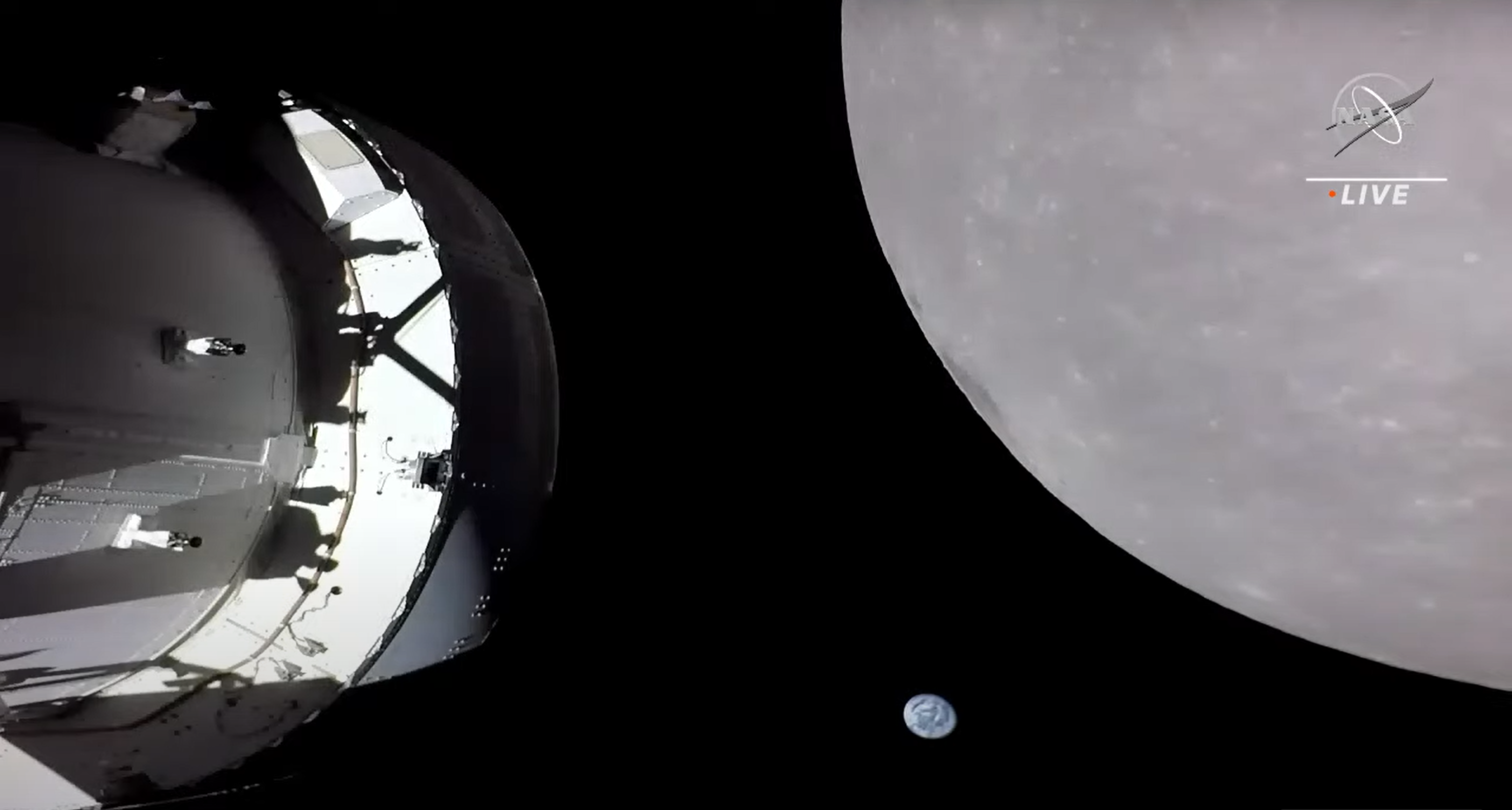
Orion is exceeding expectations from NASA, the industry teams and our European partners at ESA that built the SLS, Orion crew module, service module, grind hardware and all associated systems.
The OMS engines are recycled from the space shuttle and repurposed for Orion. This OMS engine flew on 19 shuttle missions between 1984 and 2002.
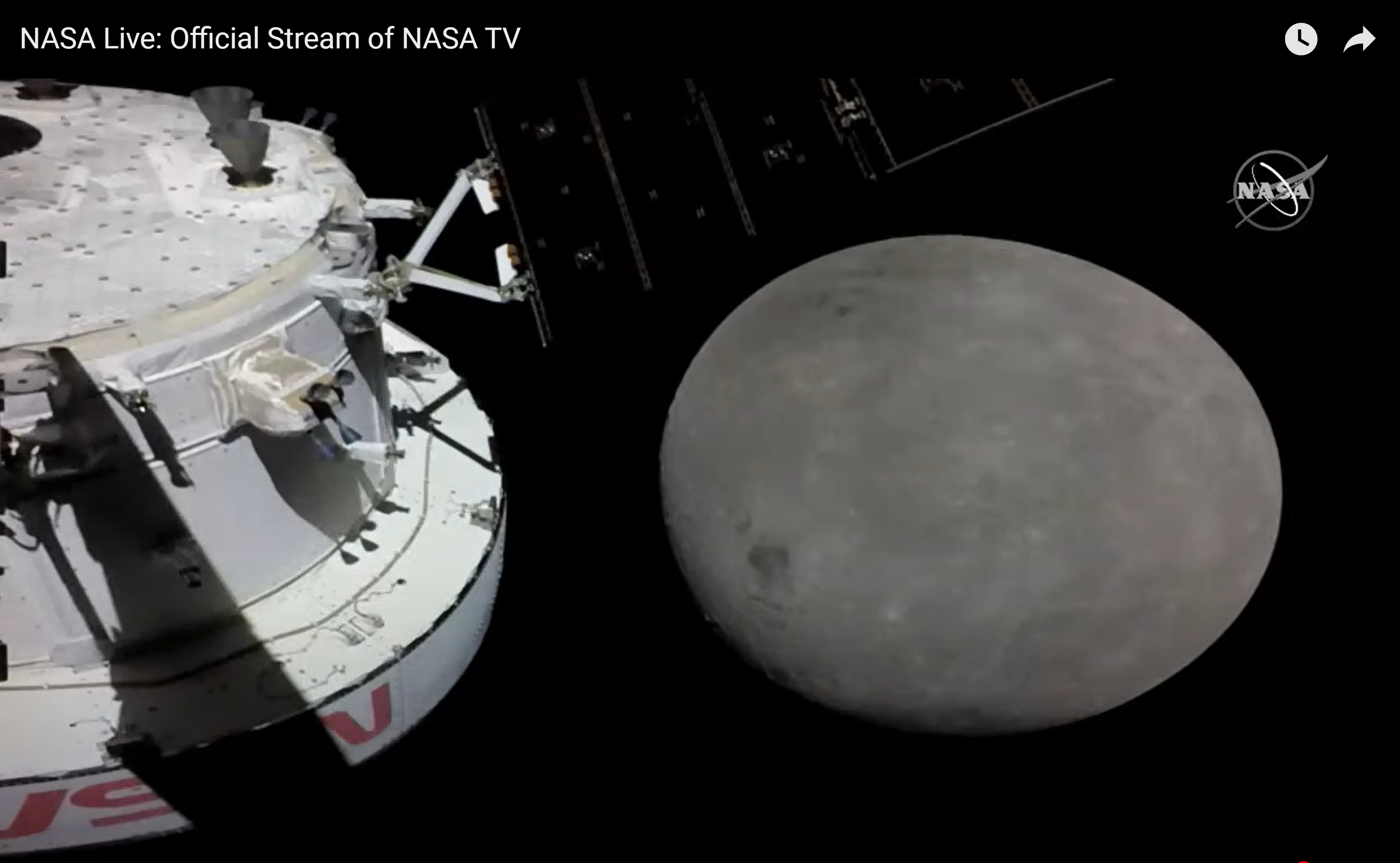
Since Orion was behind the Moon there was no radio communications at the time the OPF OMS burn when it started and completed – as planned.
Engineers had to wait until Orion reemerged from behind the Moon to determine if it was successful.
At the time of the OPF burn, Orion was traveling 328 miles above the Moon and descending. This maneuver accelerated the spacecraft at a rate of more than 580 mph to a speed of 5,102 mph after the burn.
Orion next re-acquired signal (AOS) with NASA’s Deep Space Network, at 7:59 a.m. EST after successfully performing the outbound powered flyby burn.
“Today, Orion came within a mere 80 miles of the Moon, some 231,000 miles from Earth. This is a huge step for the Artemis I mission and critical to understanding our spacecraft before we fly astronauts on it to the Moon. Congratulations to the tens of thousands of team members and partners who have gotten us to this point. This is not just your achievement but one for humanity,” said NASA Administrator Bill Nelson.
“The Artemis Generation spans the globe and we are united by a shared belief in exploring the cosmos for the good of all.”
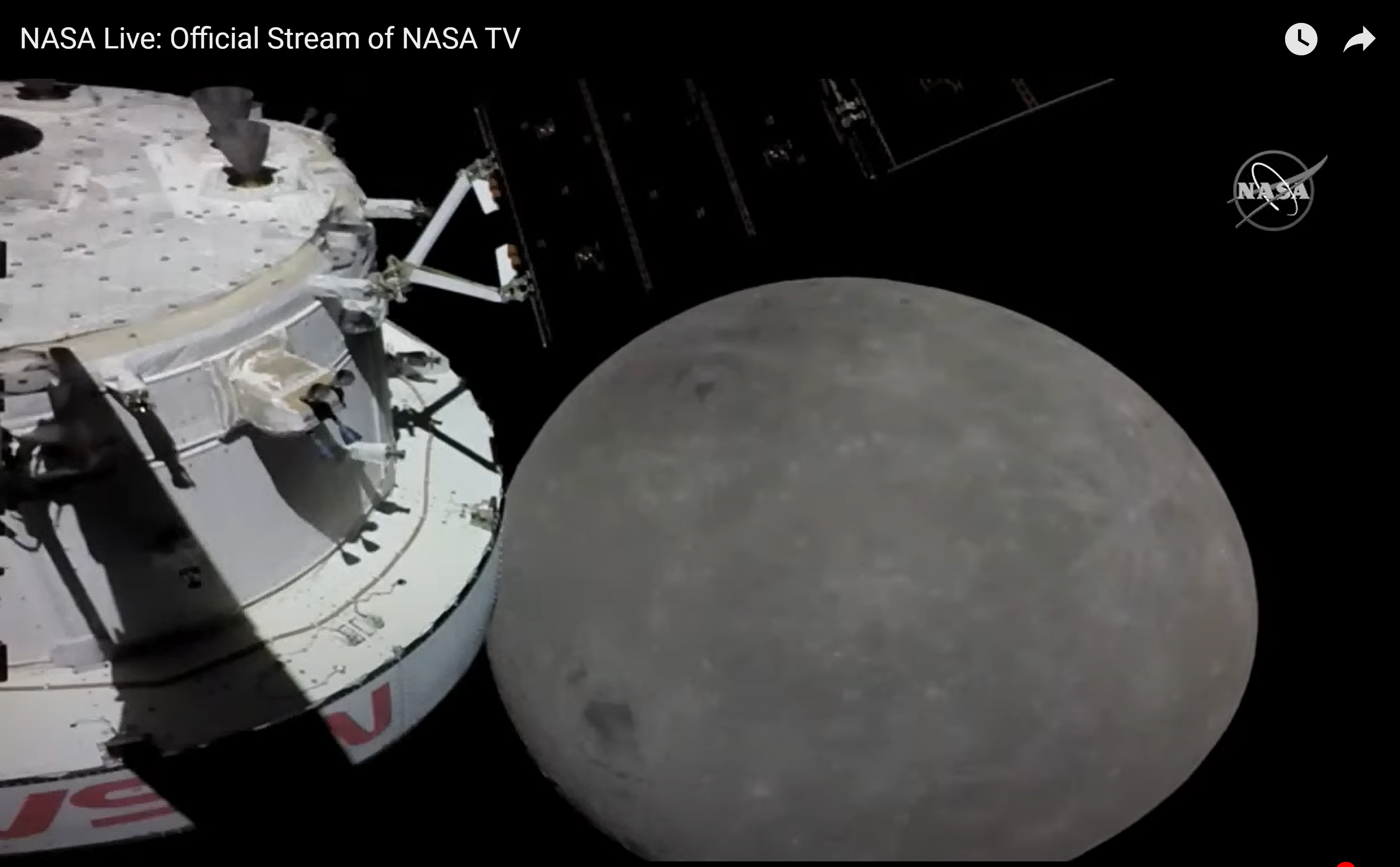
Shortly after the outbound flyby burn, Orion passed about 1,400 miles above the Apollo 11 landing site at Tranquility Base at 8:37 a.m. Orion later flew over the Apollo 14 site at about 6,000 miles in altitude and then over the Apollo 12 site at an altitude of about 7,700 miles
At the time of the lunar flyby, Orion was more than 230,000 miles from Earth.
The OPF put Orion on track for its trajectory to enter the distant retrograde orbit it will travel through during the course of the 25.5 day long Artemis 1 mission.
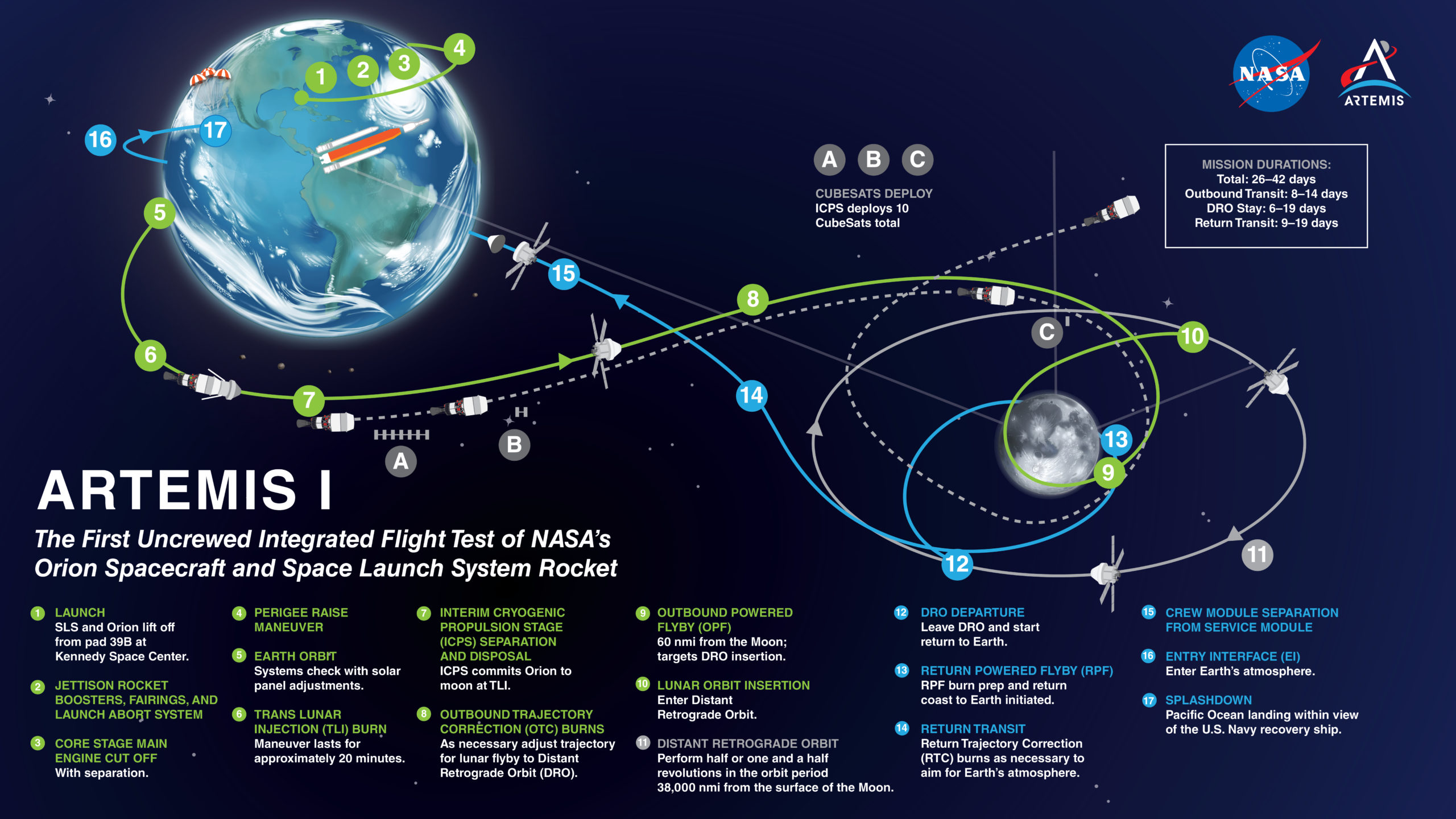
“The mission continues to proceed as we had planned, and the ground systems, our operations teams, and the Orion spacecraft continue to exceed expectations, and we continue to learn along the way about this new, deep-space spacecraft,” said Mike Sarafin, Artemis I mission manager, in a Nov 21 media briefing at NASA’s Johnson Space Center, in Houston, Texas.
The OPF burn was the first of two maneuvers required to enter the distant retrograde orbit around the Moon.
The spacecraft will perform the distant retrograde orbit insertion burn later this week on Friday, Nov. 25, again using the OMS engine on the European Service Module, that will place it into the DRO orbit.
The orbit is “distant” in the sense that it’s at a high altitude from the surface of the Moon, and it’s “retrograde” because Orion will travel around the Moon opposite the direction the Moon travels around Earth, according to NASA.
“This orbit provides a highly stable orbit where little fuel is required to stay for an extended trip in deep space to put Orion’s systems to the test in an extreme environment far from Earth.”
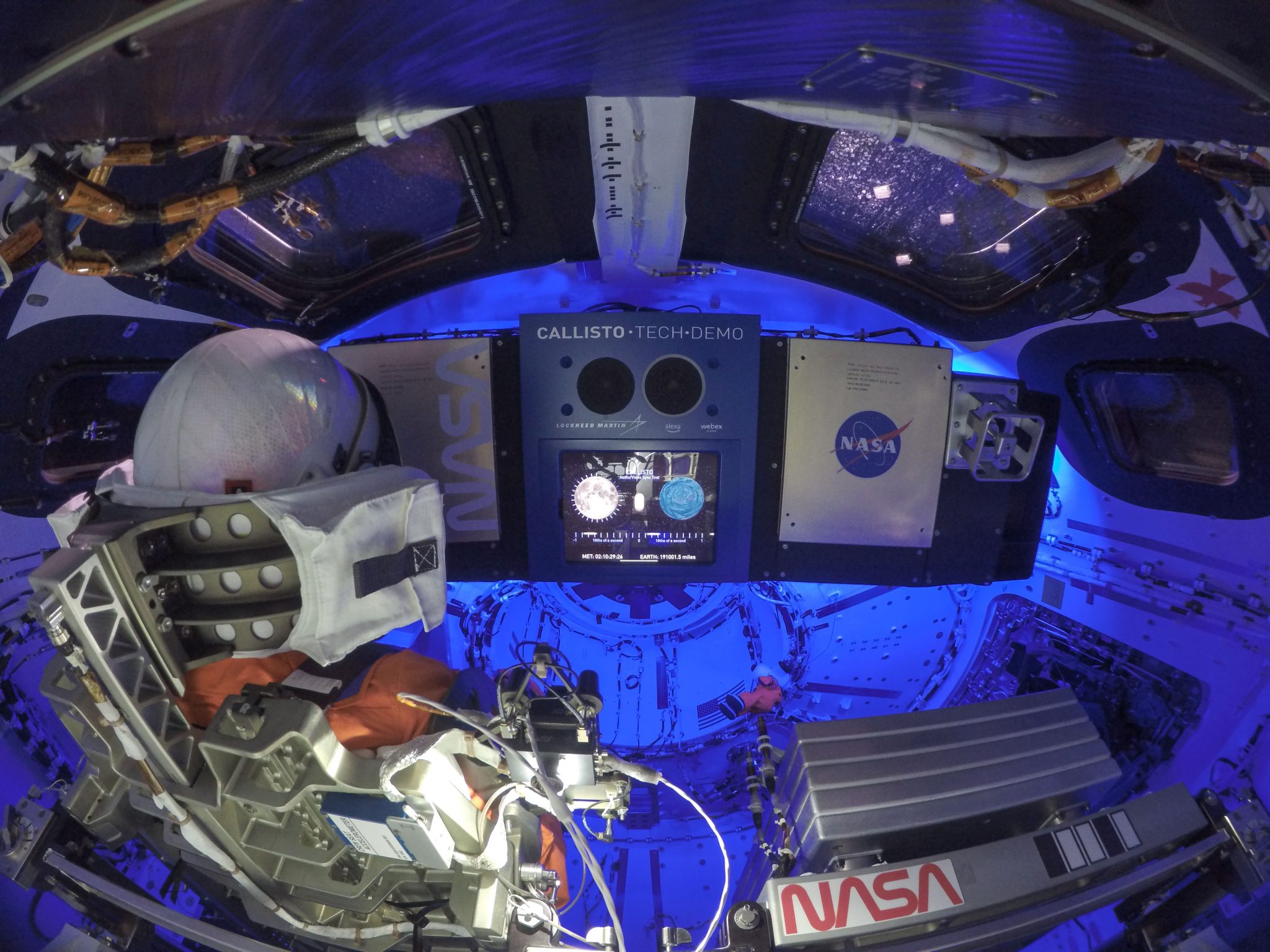
Orion will remain in this orbit for about a week to test spacecraft systems.
“The distant retrograde will take Orion 40,000 miles past the Moon before it returns to Earth. Orion’s greatest distance from the Earth will be Monday, Nov. 28 at 4:05 p.m. EST at more than 268,500 miles. Orion’s greatest distance from the Moon will be on Friday, Nov. 25 at 4:53 p.m. EST at more than 57,250 miles, says NASA.
“Orion will remain in this orbit for about a week to test spacecraft systems. The distant retrograde will take Orion 40,000 miles past the Moon before it returns to Earth. Orion’s greatest distance from the Earth will be Monday, Nov. 28 at 3:05 p.m. CST at more than 268,500 miles. Orion’s greatest distance from the Moon will be on Friday, Nov. 25 at 3:53 p.m. CST at more than 57,250 miles.”
There are three mannequins aboard Orion to simulate human passengers. They are equipped with sensors to measure what it would if human were aboard and will measure things like temperature, pressure, vibrations, radiation and more.
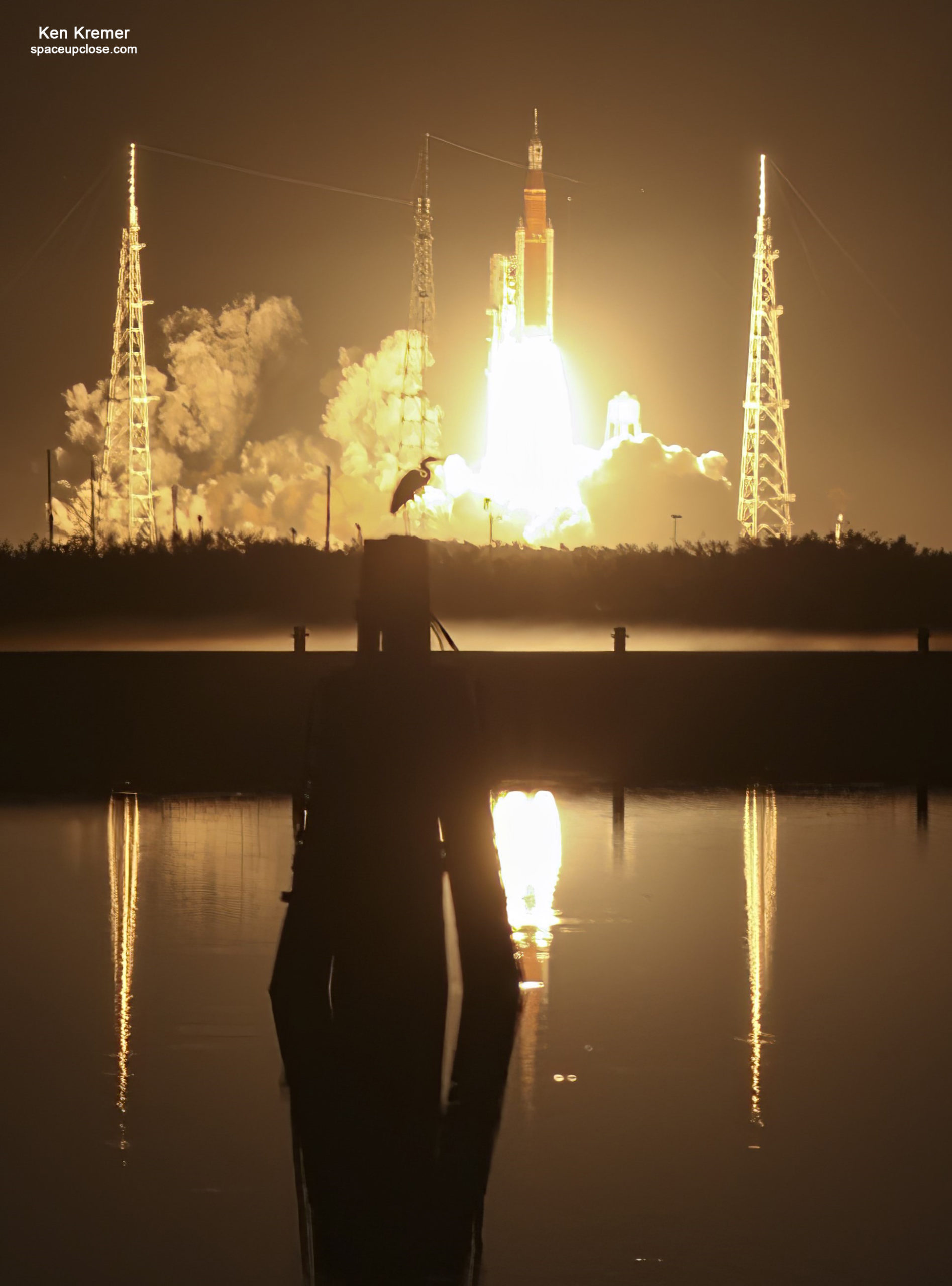
The Artemis Era of exploration officially opened with the spectacularly beautiful nighttime blastoff of NASA’s mammoth SLS moon rocket for the first time on the Artemis 1 mission on Wednesday, Nov. 16, from the Kennedy Space Center on its maiden lunar test flight with the Orion crew capsule, that puts America back on the path of returning humans to the Moon after a way to long 50-year hiatus since 1972 and passes the torch of leadership in space and science to a new generation – namely the Artemis generation.
Many of us from the Apollo generation have waited 50 years for this moment and are absolutely thrilled that the mantel of space exploration has been passed to the Artemis generation to carry forward brilliantly to the Moon, Mars and beyond!
The long awaited and delayed blastoff of the 322 foot tall (98 m) Artemis 1 super heavy stack of SLS and Orion was both inspiring and impressive beyond expectation
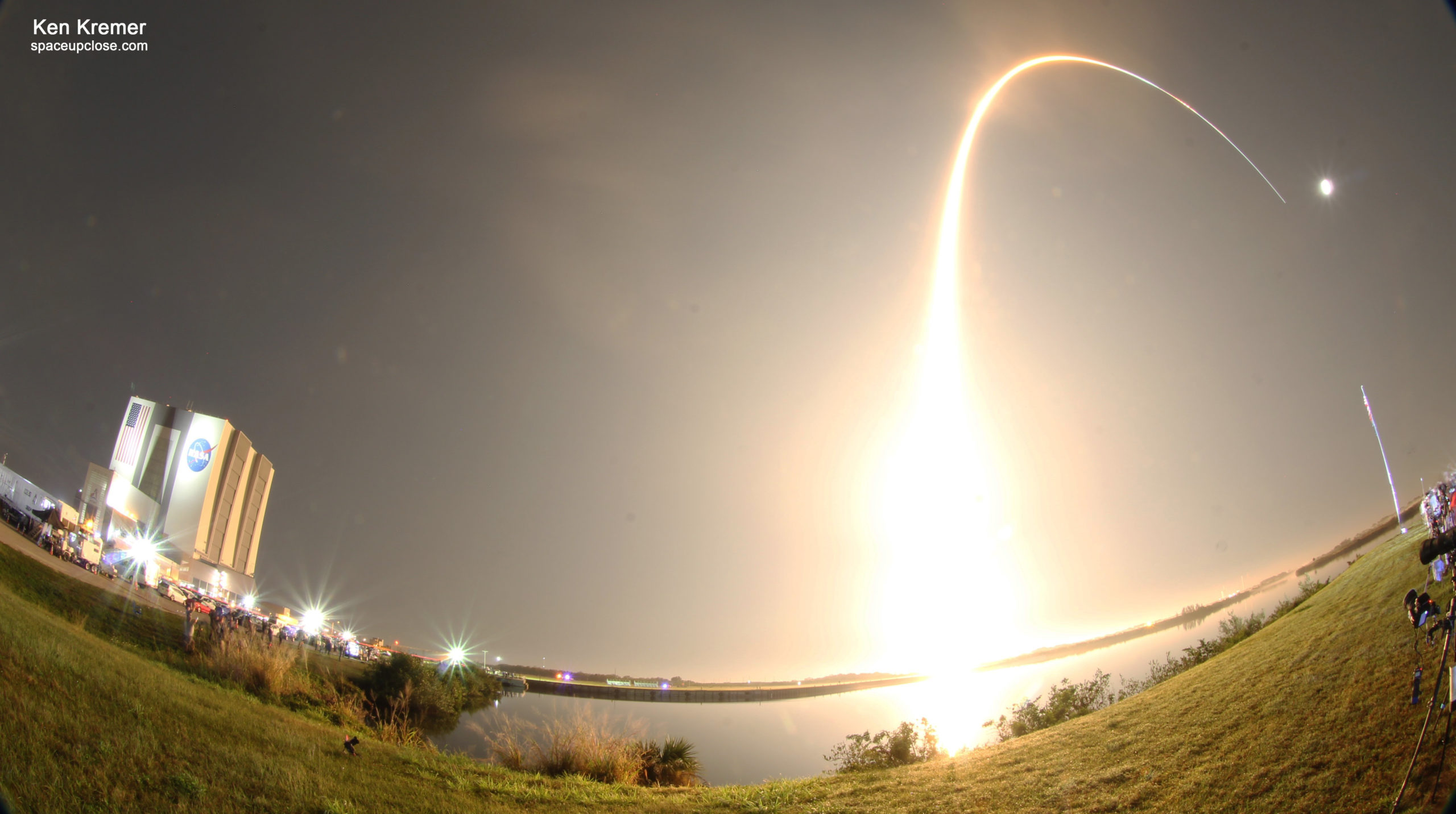
The blinding light generated from 8.8 million pounds of thrust spewing from NASA’s $4.1 Billion Space Launch System (SLS) Mega Moon rocket instantly turned night into day past midnight as crowds ringing Florida’s Space Coast roared their approval and cheered the mammoth rocket that successfully propelled NASA’s Orion deep space human capsule on a critical 26 day long unpiloted test flight around the Moon and back – with no astronauts aboard this time.
SLS lifted off with an uncrewed Orion capsule for its stunning flight test debut on the Artemis 1 mission at 1:47 a.m. EST (0647 GMT) Wednesday, Nov. 16 from Launch Pad 39B at the Kennedy Space Center in Florida – sending America to the moon with the 1st human rated capsule in 50 years.
SLS now counts as the world’s the most powerful rocket ever built – about 15 to 20% more powerful than NASA’s Apollo Saturn V moon rocket and the Space Shuttle.
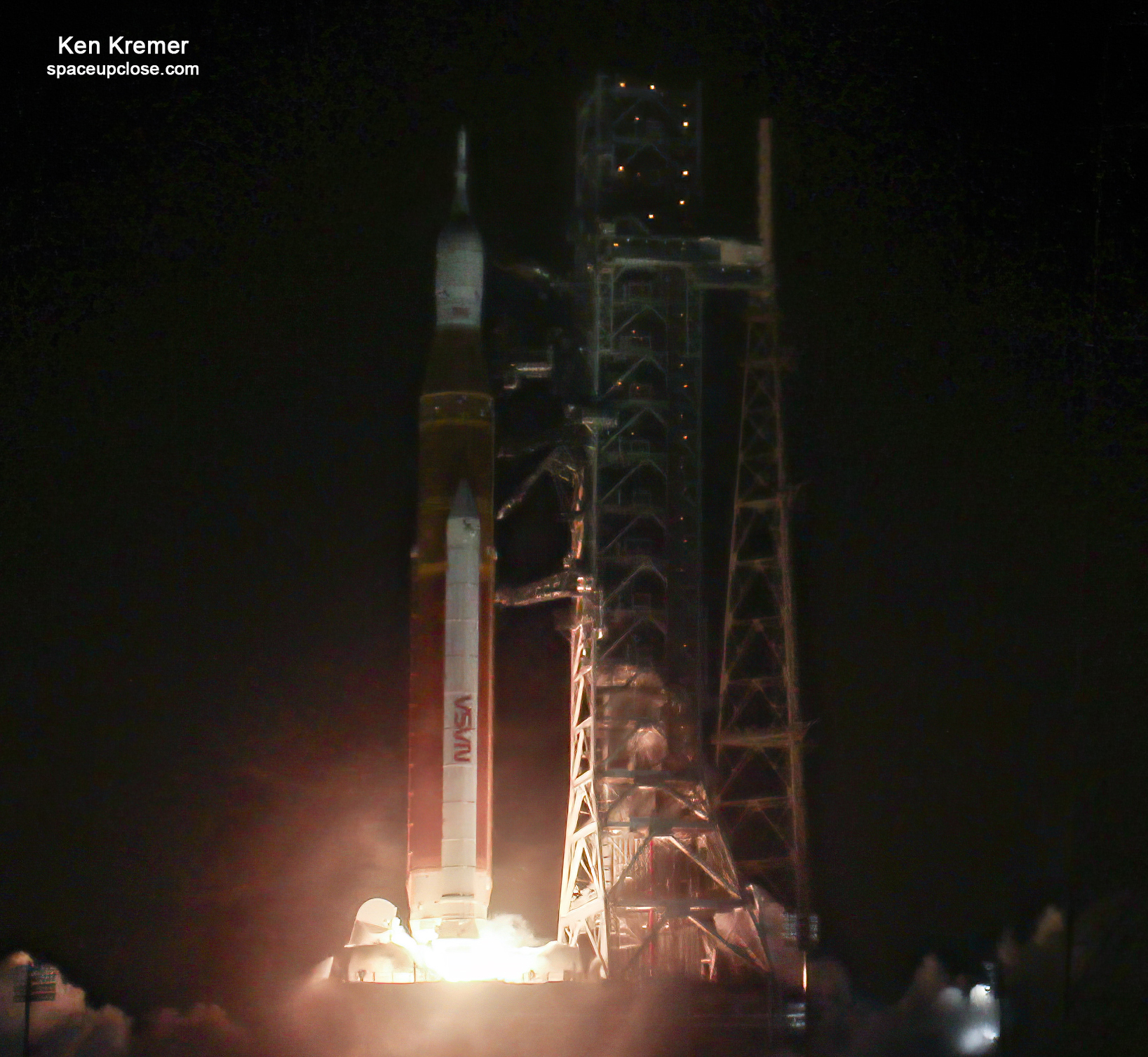
The 32 story tall two stage SLS is derived from NASA’s Space Shuttle with the core stage liftoff thrust of 8.8 million pounds provided by a pair of side mounted solid rocket boosters (SRBs) and four RS-25 main engines – all recycled from the space shuttle and attached to an extended External Tank (ET) also from the shuttle.
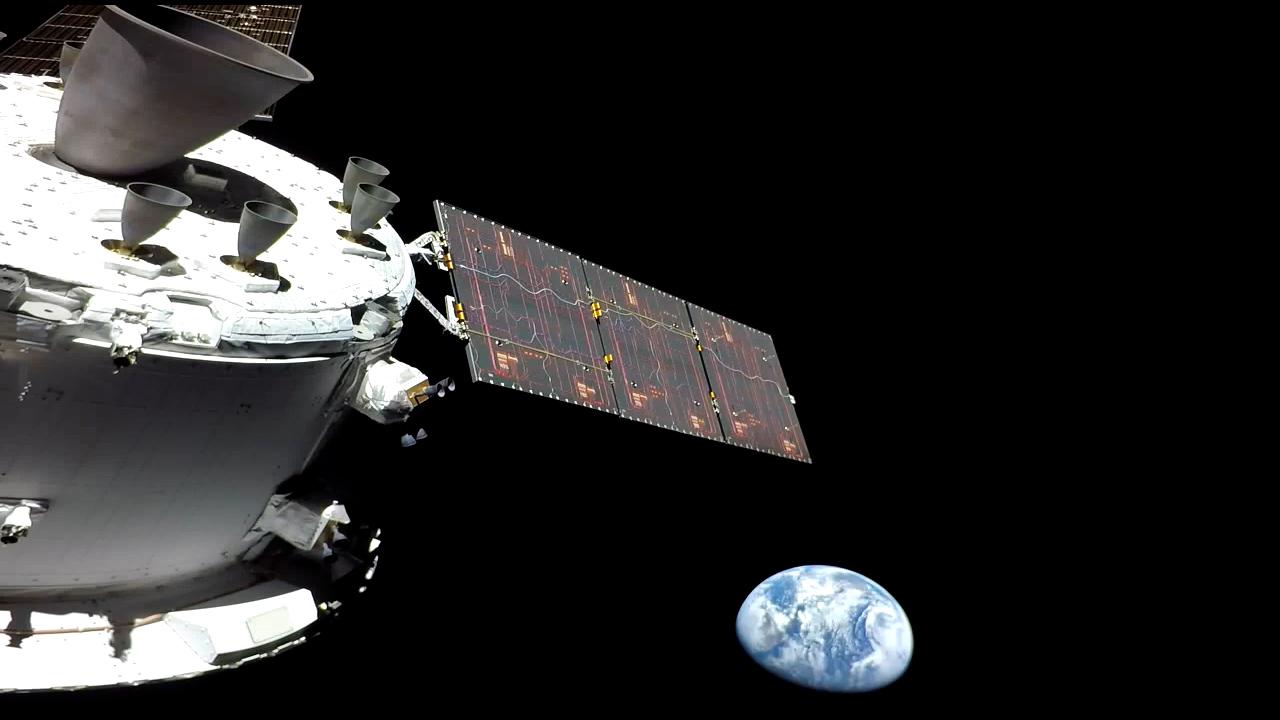
Artemis 1 is absolutely critical and must be successful with all major objectives in order for NASA to move forward with Project Artemis to once again land American astronauts on the Moon – potentially as soon as 2025, if all goes well.
“I have to say, for what we saw tonight, it’s an A-plus,” said NASA Administrator Bill Nelson at the Artemis 1 post launch press conference.
“It’s a test flight. It took a long time coming to get here. The last time we were on the moon was Apollo 17.”
Apollo 17 was launched in 1972 and placed the final pair of NASA astronauts on the moon – Gene Cernan and Harrison Schmidt during the Project Apollo moon landing program begun by President John F. Kennedy in 1961.
No human has left Earth orbit in the past half century after politicians cancelled the remaining three Apollo moon landing missions that began in 1969 with Apollo 11 and the first humans to set foot on another celestial body – Neil Armstrong and Buzz Aldrin.
Artemis 1 will push Orion to its limits during a nearly 26 day mission and pave the path for astronauts to fly aboard for the first time to the Moon on the Artemis 2 mission around our nearest neighbor in about 2 years in 2024.
Artemis 1 is an unpiloted lunar test flight with no astronauts on board.
This first lunar test flight of SLS and Orion will conclude after nearly a month circling the Moon and return with a splashdown of the capsule in the Pacific Ocean on Dec. 11.
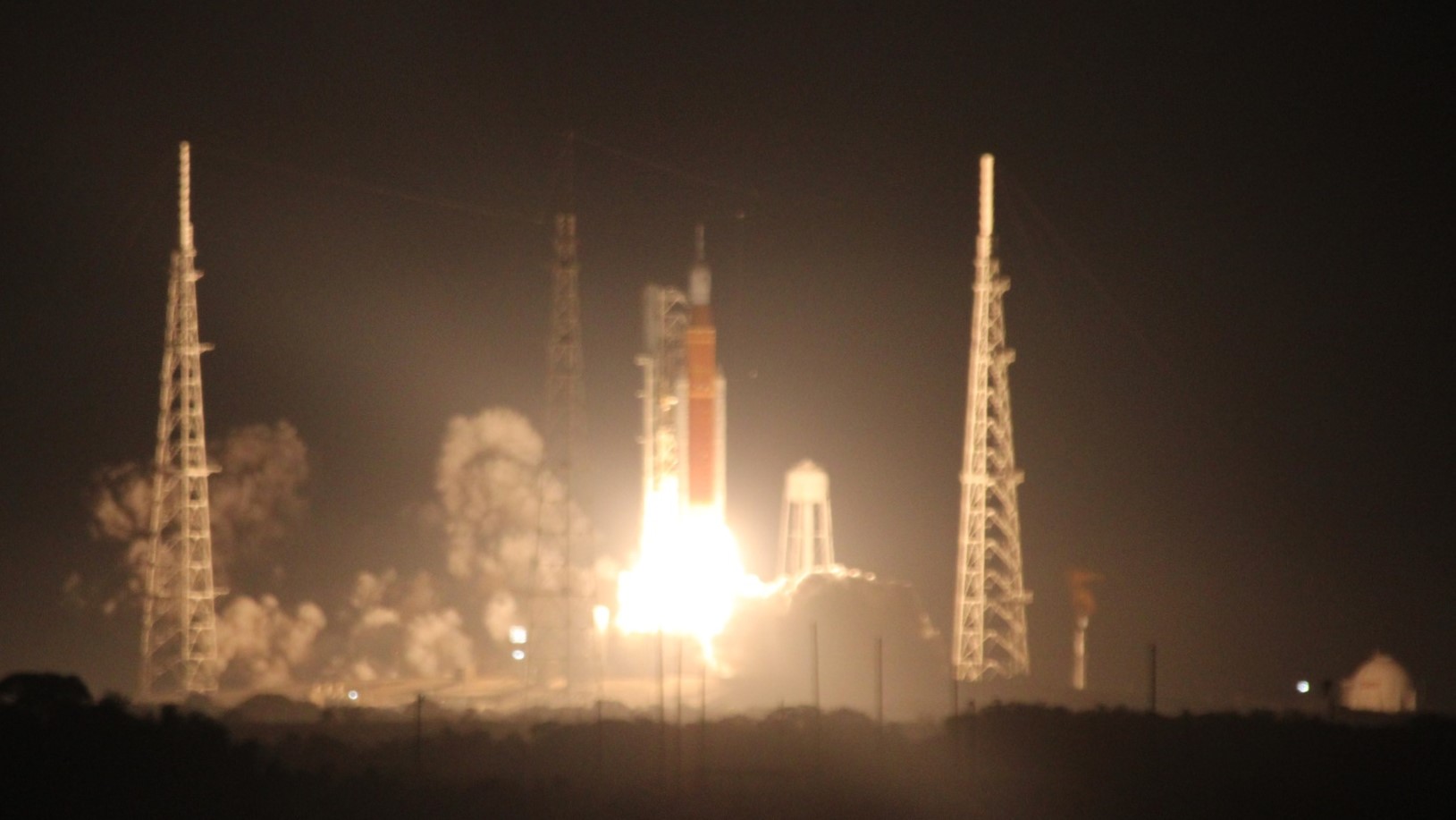
If all goes well Artemis 2 will launch by late 2024 with a crew of 4 astronauts from the US and Canada.
“What an incredible sight to see NASA’s Space Launch System rocket and Orion spacecraft launch together for the first time. This uncrewed flight test will push Orion to the limits in the rigors of deep space, helping us prepare for human exploration on the Moon and, ultimately, Mars,” said NASA Administrator Bill Nelson.
The primary objectives for the Artemis 1 mission that must be accomplished following the successful launch and delivery by the SLS moon rocket are: demonstrating Orion’s heat shield at lunar return re-entry conditions, demonstrating operations and facilities during all mission phases, and retrieving the spacecraft after splashdown.
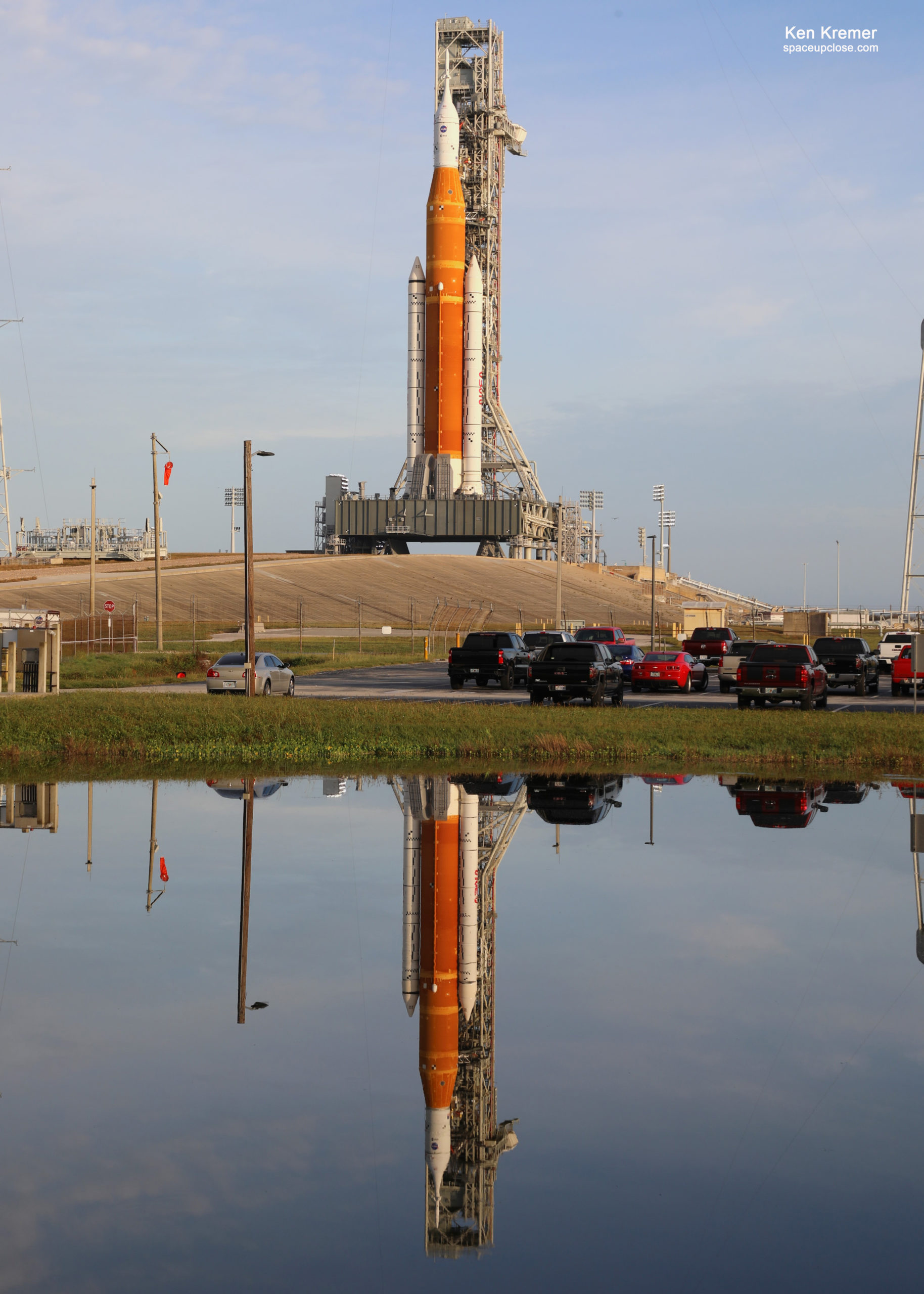
Artemis 1 is the first integrated flight test of the agency’s deep space exploration systems: the Orion spacecraft, Space Launch System (SLS) rocket, and ground systems and the mission is a critical part of NASA’s Moon to Mars exploration strategy.
The 32-story tall Artemis 1 stack is comprised of NASA’s Space Launch System (SLS) Mega moon rocket integrated with the Orion crew spacecraft on top.
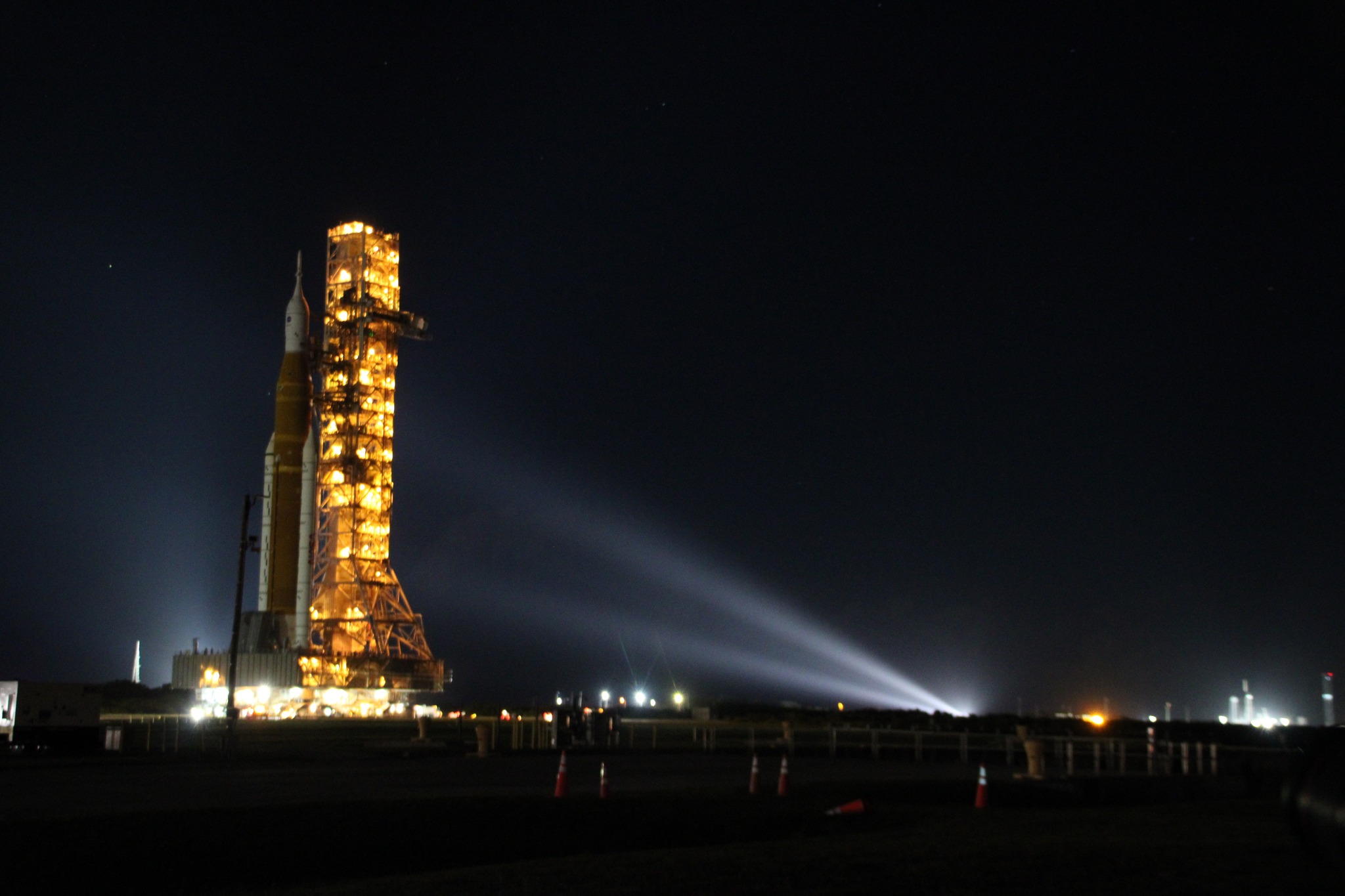
Watch Ken’s commentary about Project Artemis, SpaceX Falcon Heavy, Crew-5, NASA SLS cryo and WDR tests, NASA SpaceX Crew & Cargo Dragons and more
Nov 22: WFTV ABC News Orlando interview about upcoming NASA SpaceX CRS 26 cargo resupply mission to the ISS and science aboard + Artemis 1 launch and Orion crew capsule successfully entering lunar orbit, results and mission goals
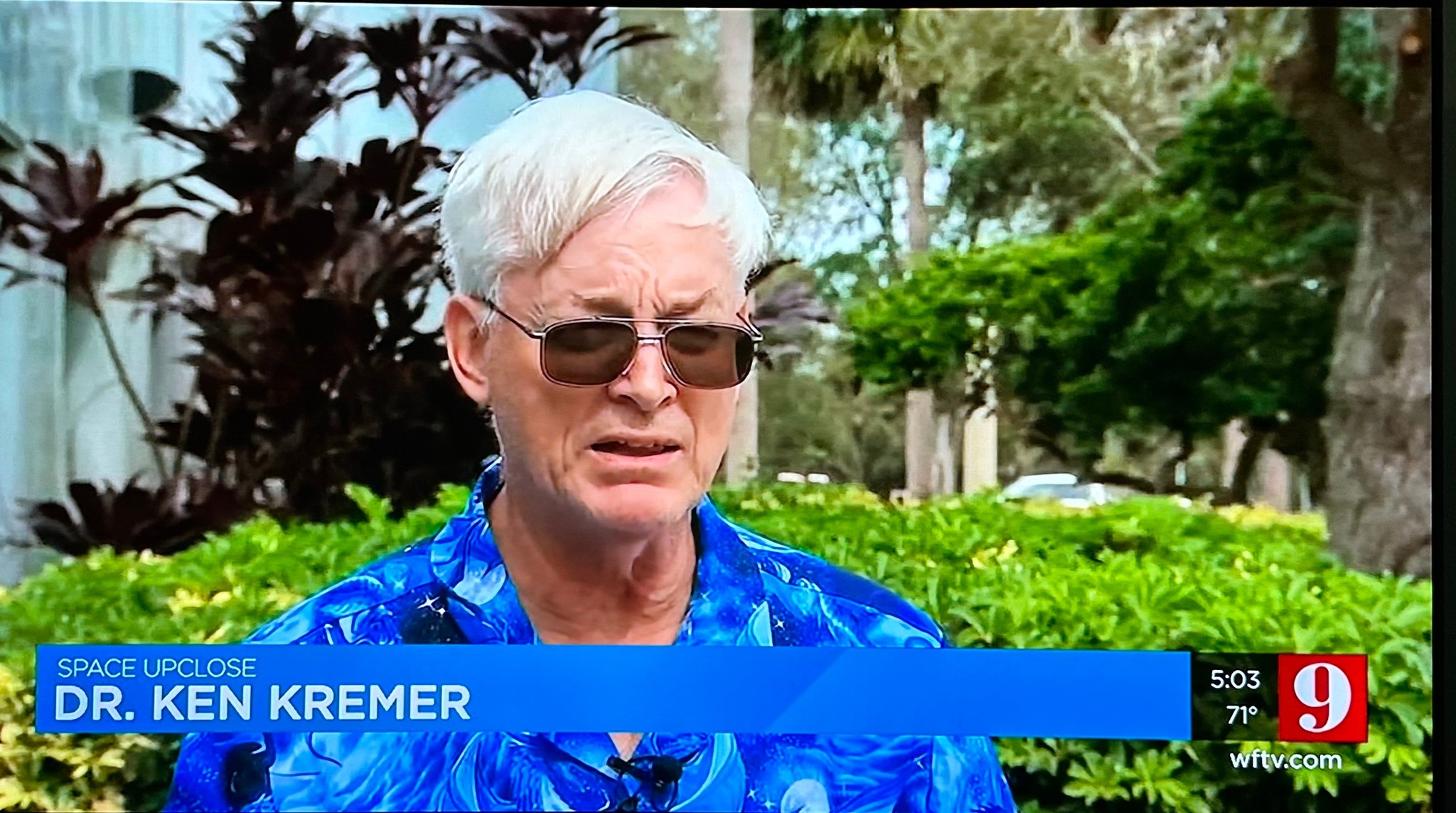
Nov 22: Fox 35 interview about upcoming NASA SpaceX CRS 26 cargo resupply mission to the ISS and science aboard + Artemis 1 launch and Orion crew capsule successfully entering lunar orbit, results and mission goals
Nov 21: BBC World TV interview about Orion crew capsule successfully entering lunar orbit, results and mission goals
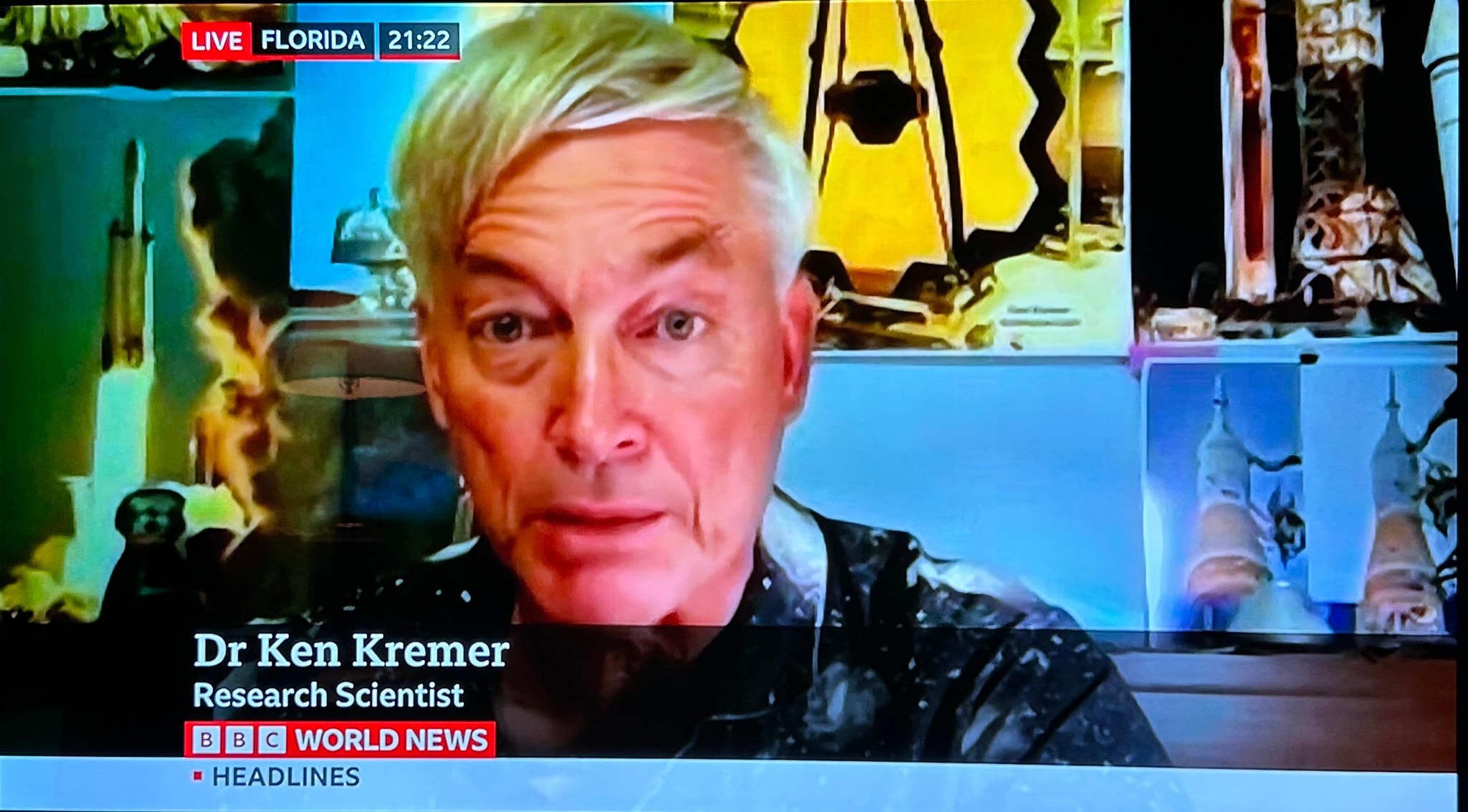
Nov 16: Fox 35 Orlando live and taped interviews about Artemis 1 launch and goals
Nov 15/16: News Nation interview about Artemis 1 launch and goals
Nov 7/8: Fox 35 Orlando – As subtropical storm Nicole approaches KSC and Florida watch my comments about NASA deciding for the moment to keep Artemis 1 moon rocket at pad 39b and not roll back to VAB
https://www.fox35orlando.com/news/nasa-says-its-keeping-artemis-outside-during-major-storm
NASA says it's keeping Artemis on the launch pad. The rocket can withstand winds up to 85 miles an hour. The @NWSMelbourne is predicting windspeeds could very well hit that point in Brevard County – in fact, a Tuesday morning update says windspeeds could be in the 74-110mph range pic.twitter.com/i569eAmi9p
— Marie Edinger FOX 35 (@MarieEdinger) November 8, 2022
Nov 4/5: WFTV ABC News Orlando featured my commentary about Artemis 1 rollout overnight and goals of NASA lunar test flight mission launching Nov 14 at 1207 AM
Nov 4: Fox 35 Orlando featured my commentary about Artemis 1 rollout overnight and goals of NASA lunar test flight mission launching Nov 14
Nov 1: Fox 35 Good Day Orlando morning show featured my live and taped prelaunch interview commentary about SpaceX Falcon Heavy launch with Space Force national security payloads
Nov 1: WFTV ABC News featured my commentary about SpaceX Falcon Heavy launch with Space Force national security payloads
https://news.yahoo.com/watch-lve-spacex-launches-falcon-100341265.html
Oct 31: WFTV ABC News featured my commentary about SpaceX Falcon Heavy launch with Space Force national security payloads
Oct 27: WFTV ABC News and Fox 35 Orlando featured my commentary about Falcon Heavy and the Space Force national security payloads
https://www.fox35orlando.com/video/1137117
Watch Ken’s continuing reports about Artemis, SpaceX missions, SLS, Orion and NASA missions, SpaceX Crew and Cargo Dragons, SpaceX Axiom, JWST, DART, Lucy Asteroid mission, GOES, SpaceX Starlink, Commercial Crew and Starliner and Crew Dragon, Blue Origin and Space Tourism, and onsite for live reporting of upcoming and recent SpaceX and ULA launches including Crew 1 & 2 & 3 & 4 & 5, ISS, Solar Orbiter, Mars 2020 Perseverance and Curiosity rovers, NRO spysats and national security missions and more at the Kennedy Space Center and Cape Canaveral Space Force Station.
Stay tuned here for Ken’s continuing Earth and Planetary science and human spaceflight news: www.kenkremer.com –www.spaceupclose.com – twitter @ken_kremer – email: ken at kenkremer.com
Dr. Kremer is a research scientist and journalist based in the KSC area, active in outreach and interviewed regularly on TV and radio about space topics.
………….
Ken’s photos are for sale and he is available for lectures and outreach events
Please consider supporting Ken’s work by purchasing his photos and/or donating at Patreon
https://www.patreon.com/kenkremer
Upcoming and recent space events and talks by Ken Kremer & Jean Wright
Nov 14/15/19/20 from 7 to 9 PM Quality Inn, Titusville, FL: Join Ken and Jean for Artemis 1, Falcon Heavy and space mission and rocket launch outreach. Ask us anything. plus display our photos and space apparel items for sale
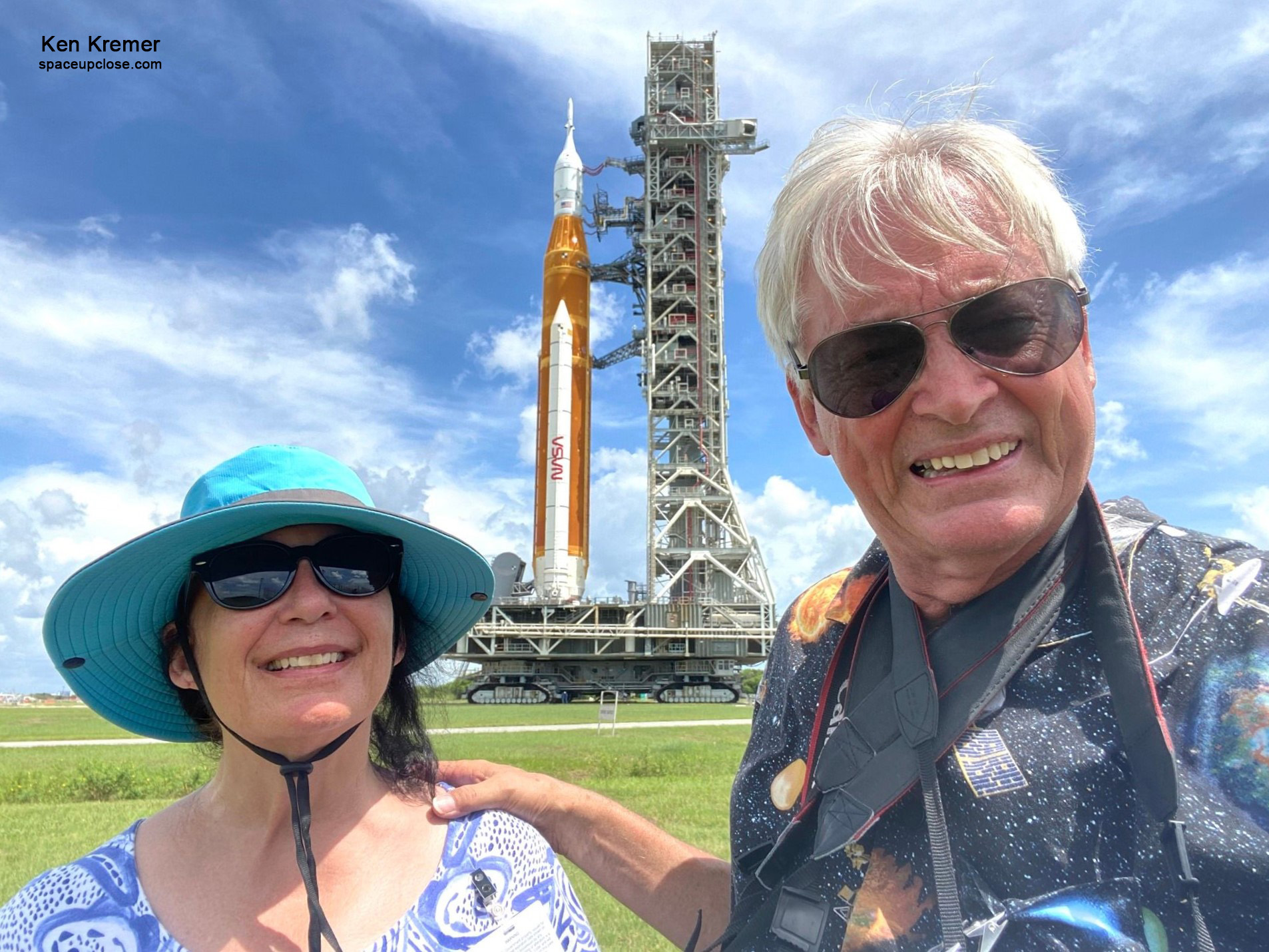
x



